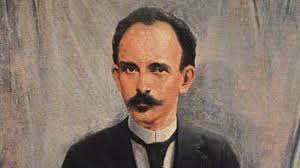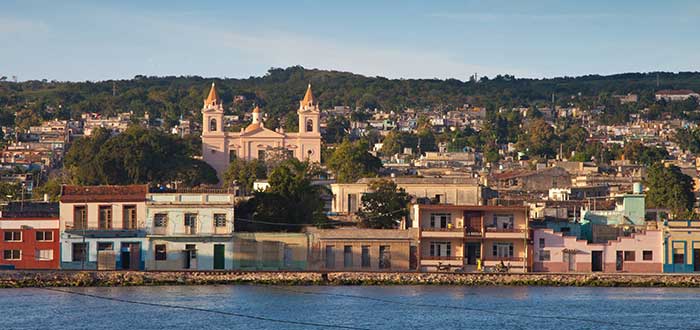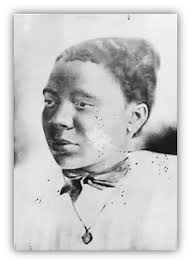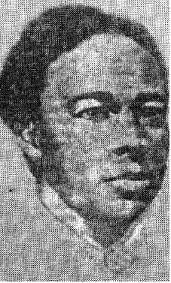 A LITTLE KNOWN STORY, “LA MADRE NEGRA” OF JOSÉ MARTÍ.
A LITTLE KNOWN STORY, “LA MADRE NEGRA” OF JOSÉ MARTÍ.
Today we want to let you know about an episode in the life of our Apostle José Martí and it was the fraternal relationships that united him with a great Cuban, Paulina Hernández, and that life crossed them patriotically during their stay in the United States.
Undoubtedly, although Martí loved his mother deeply, there was another Cuban woman with black skin, to whom he professed the same level of affection and whom he met in Tampa when the daughter of Carabalí slaves crossed the Master’s path for good. The figure of this female, unfortunately, forgotten in Cuban historiography, deserves an approach that reveals the essential features of his deep personality.
Paulina Hernández was born in Pinar del Río. She married the Cuban Ruperto Pedroso. The couple decided to go to Tampa in 1888 and there they established an inn. On November 26, 1891, José Martí visited that city for the first time and there he met the couple. They fully identified with the Apostle’s project and in Martí’s life of permanent combat, a new light was opened, before the affection of that black woman and her husband for him.
HIS DEEP AFFECTION
In 1892, during one of Martí’s stays in Tampa, an attempt was made to poison him. Martí’s flimsy life was cared for by Cuban doctor Miguel Barbarrosa Márquez. Paulina became a nurse, supplying the medications that Martí required. With Paulina’s constant and skillful care and attention, Martí was able to recover, although his body was permanently marked by the ravages of this incident.
After this event, Martí only spent the night in the Pedroso house and limited himself to consuming only those foods that the faithful woman prepared for him.
Later, Paulina was able to help Martí again in very difficult moments for her. The failure of the Plan La Fernandina was a devastating blow, for those who for so long encouraged the contribution of all the emigrants in order to raise money to arm an independence expedition.
That objective was thwarted when, due to a betrayal, the La Fernandina vessels were seized by US authorities and the supplies that were supposed to arrive in Cuba to resume the fight was lost. Paulina and Ruperto took extreme risks, out of love for Martí and dedication to the cause of Cuban independence. They mortgaged their property so that the essential military supplies for Cuban liberation could be acquired.
They did not catch the Master, but they were looking for him everywhere. He had been left in a state of depression from which he barely got up.
Paulina, in addition to working as a cook and seamstress, was self-taught. At home, she founded a society known as the Tampa League, where she promoted the study. She knew how to read and write and even developed a gift for musical appreciation and composition. “Martí, I loved you as a mother, I revere you as a Cuban, You were good: Cuba owes you its Independence,” wrote Paulina in a poem that she published in the Cuba newspaper in Tampa on May 18, 1897.
By 1905, Paulina was still living in Tampa, in very poor conditions and exposed to eviction. By the first days of 1906, she had already moved back to Cuba.
A SHAME DONATION.
On one occasion, the Cuban Senate approved a donation of 3,000 Cuban pesos for Paulina. The donation was in shameful contrast to the donation of 25 thousand pesos that was approved as a gift for the wedding of the daughter of Theodore Roosevelt, then president of the United States.
Only that amount was granted to Paulina, she was never assigned a pension. However, it was always supported by the immeasurable towards Martí, to who the Apostle corresponded. He stated: “Neither Paulina nor Ruperto I ever remember without feeling like a smile in my heart.”
She died on May 21, 1913. Months before, she had asked several of her friends to place in her coffin when she left a photograph that Martí sent her, showing the emotion and affection that the Master had for that woman. You could read on it a message with simple and profound words: “To Paulina, my black mother.”
To honor the memory of this courageous contributor to Marti’s work, the researcher Josefina Toledo wrote the book entitled “The black mother of Martí.” These pages come to settle a painful debt with the brave Cuban woman, who gave her contribution in favor of independence, sovereignty, and freedom.
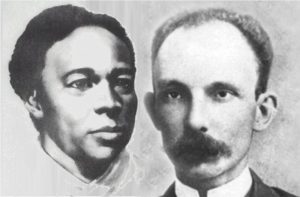 UNA HISTORIA POCO CONOCIDA “LA MADRE NEGRA” DE JOSÉ MARTÍ.
UNA HISTORIA POCO CONOCIDA “LA MADRE NEGRA” DE JOSÉ MARTÍ.
Hoy queremos hacerles conocer un episodio en la vida de nuestro Apostol José Martí y fueron las relaciones fraternales que le unió con una gran cubana, Paulina Hernández y que la vida los cruzó patrioticamente durante su estancia en Estados Unidos.
Sin dudas, aunque Martí amó profundamente a su madre, pero hubo otra cubana de piel negra, a quien le profesó igual nivel de afecto y a la que conoció en Tampa, cuando la hija de esclavos carabalíes se cruzó para bien en el camino del Maestro. La figura de esta fémina, lamentablemente olvidada en la historiografía cubana, merece un acercamiento que devele los rasgos esenciales de su profunda personalidad.
Paulina Hernández nació en Pinar del Río. Contrajo matrimonio con el cubano Ruperto Pedroso. La pareja decidió marcharse en 1888 a Tampa y allí establecieron una posada. El 26 de noviembre de 1891 José Martí visitó por primera vez esa ciudad y allí conoció a la pareja. Se identificaron plenamente con el proyecto del Apóstol y en la vida de combate permanente de Martí se abrió una nueva luz, ante el cariño de aquella mujer negra y su marido por él.
SU PROFUNDO AFECTO
En 1892, durante una de las estadías de Martí en Tampa, se realizó un intento por envenenarlo. La endeble vida de Martí fue cuidada por el médico cubano Miguel Barbarrosa Márquez. Paulina se convirtió en enfermera, suministrando los medicamentos que Martí requería. Con la atención y cuidados constantes y diestros de Paulina, Martí pudo recuperarse, aunque su cuerpo quedó perennemente marcado por los estragos de este incidente.
Luego de este hecho, Martí solamente pernoctaba en la casa de los Pedroso y se limitaba a consumir únicamente aquellos alimentos que la fiel mujer le preparaba.
Mas adelante pudo Paulina volver a ayudar a Martí en momentos muy difíciles para él. El fracaso del Plan La Fernandina resultó un golpe demoledor, para quien por tanto tiempo alentó la contribución de todos los emigrados con el fin de reunir dinero para armar una expedición independentista.
Ese objetivo se frustró cuando, por una traición, las embarcaciones de La Fernandina, fueron apresadas por autoridades norteamericanas y se perdieron los pertrechos que debían llegar a Cuba para reanudar la lucha. Paulina y Ruperto extremaron su riesgo, por amor a Martí y entrega a la causa de la independencia de Cuba. Hipotecaron su propiedad para que pudieran adquirirse los pertrechos militares esenciales para la liberación cubana.
No apresaron al Maestro, pero lo buscaban por todas partes. Había quedado en un estado de depresión del que se levantó a duras penas.
Paulina, además de desempeñarse como cocinera y costurera, fue autodidacta. En su casa fundó una sociedad conocida como la Liga de Tampa, donde promovía el estudio. Ella sabía leer y escribir y hasta desarrolló dotes de apreciación y composición musical. “Martí, te quise como madre, te reverencio como cubana, Tú fuiste bueno: a ti deberá Cuba su Independencia”, escribió Paulina en un poema que publicó en el periódico Cuba, de Tampa, el 18 de mayo de 1897.
Para el año de 1905, Paulina aún vivía en Tampa, en condiciones paupérrimas y expuesta al desahucio. Para los primeros días de 1906 ya se había trasladado de regreso a Cuba.
UN DONATIVO VERGONZOSO.
En una ocasión, el Senado cubano aprobó un donativo de 3 mil pesos cubanos para Paulina. La donación contrastaba vergonzosamente con el donativo de 25 mil pesos que se aprobó como regalo por la boda de la hija de Theodore Roosevelt, entonces presidente de Estados Unidos.
Solo ese monto le fue concedido a Paulina, nunca se le asignó una pensión. No obstante, siempre la sostuvo el inconmensurable hacia Martí, que el Apóstol correspondía. Este afirmaba: “Ni a Paulina ni a Ruperto los recuerdo nunca sin que sienta como una sonrisa en el corazón”.
Ella murió el 21 de mayo de 1913. Meses antes había pedido a varios de sus amigos que al partir, colocaran en su ataúd una fotografía que Martí le envió, mostrando la emoción y el cariño que el Maestro tuvo por esa mujer. Se podía leer en ella un mensaje con palabras simples y profundas: “A Paulina, mi madre negra”.
Para honrar la memoria de esta valerosa contribuyente a obra martiana, la investigadora Josefina Toledo escribió el libro titulado “La madre negra de Martí”. Estas páginas vienen a saldar una penosa deuda con la aguerrida mujer cubana, que dio su aporte a favor de la independencia, la soberanía, la libertad.
Agencies/ TodoCuba/ Internet Photos/ Extractos/ Excerpts/ Arnoldo Varona/ www.TheCubanHistory.com
THE CUBAN HISTORY, HOLLYWOOD.



